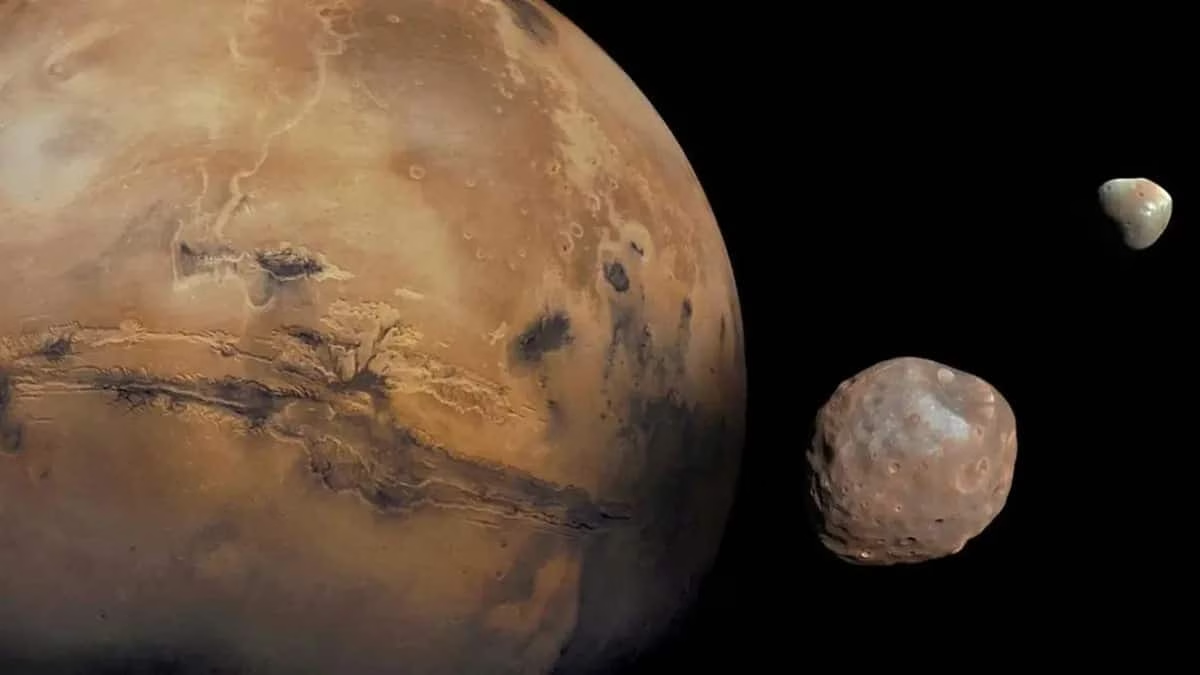Mars’ moons may have formed from debris from a large asteroid
- November 27, 2024
- 0
Traditional theories of the origin of the moons of Mars – Phobos and Deimos – do not explain the features of their composition and orbits. Therefore, astronomers have
Traditional theories of the origin of the moons of Mars – Phobos and Deimos – do not explain the features of their composition and orbits. Therefore, astronomers have

Traditional theories of the origin of the moons of Mars – Phobos and Deimos – do not explain the features of their composition and orbits. Therefore, astronomers have proposed a new hypothesis, according to which the moons of the fourth planet from the Sun are formed from the debris of a large asteroid dangerously close to the Red Planet. Calculations showed that the planet had exceeded the so-called Roche limit, which is the distance at which tidal forces caused by gravity are too great to break up the asteroid. Future space missions will help verify scientists’ conclusions.
Astronomer Asaph Hall discovered the moons of Mars in 1877. Since then, these celestial bodies have been in the spotlight because their origins are still questionable. The appearance of the moons and their small size (Phobos has a diameter of about 26 kilometers and Deimos has a diameter of about 16 kilometers) support the capture theory, but do not explain the characteristics of near-circular and equatorial orbits.
As a rule, orbits of captured moons such as Triton (Neptune’s moon) or Phoebe (Saturn’s moon) are elongated and inclined, and sometimes they inherently move backwards around their parent planet. This is why a more natural explanation is offered by the hypothesis of a giant collision involving the “meeting” of the Red Planet with another celestial body.
With the help of the Durham University (United Kingdom) supercomputer, a team of researchers led by Jacob Kegerreis of NASA’s Ames Research Center conducted hundreds of studies. simulations.
By varying the asteroid’s diameter, spin, speed, and distance from the Red Planet during maximum approach, scientists developed a scenario that explains both the origin and orbital characteristics of Phobos and Deimos. The results showed that the asteroid that passed by Mars was destroyed by tidal forces, and a significant portion of the debris was captured by the planet’s gravity. These fragments then formed a disc from which Phobos and Deimos emerged through accumulation.
Because the scenario of a destroyed asteroid involves a smaller parent body mass than the hypothesis of a giant impact, the conclusions of the authors of the new scientific study are more likely. Also, the lowest mass asteroids are more common in the solar system. Each of the three hypotheses (asteroid capture, impact, and destruction) can be tested using future space missions such as the Mars Moons eXploration (MMX). Further research will also allow scientists to analyze the surface composition, internal structure and orbital parameters of Phobos and Deimos.
Source: Port Altele
As an experienced journalist and author, Mary has been reporting on the latest news and trends for over 5 years. With a passion for uncovering the stories behind the headlines, Mary has earned a reputation as a trusted voice in the world of journalism. Her writing style is insightful, engaging and thought-provoking, as she takes a deep dive into the most pressing issues of our time.